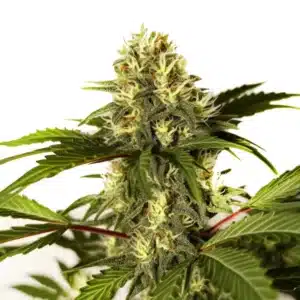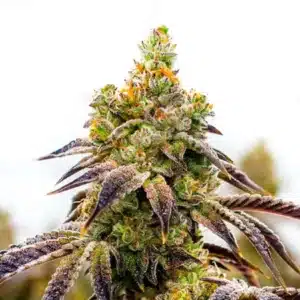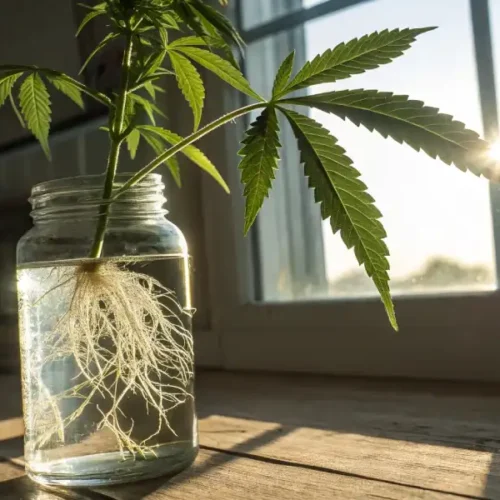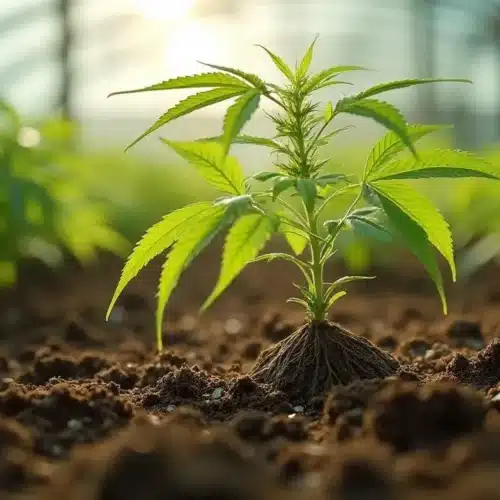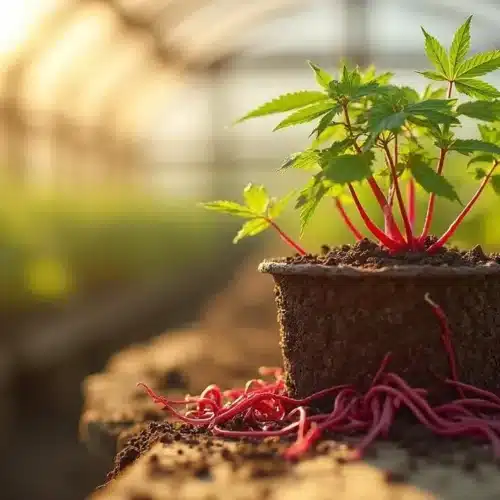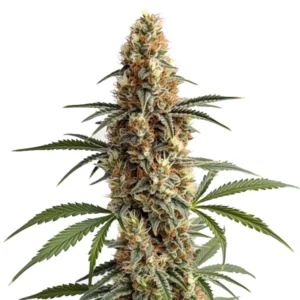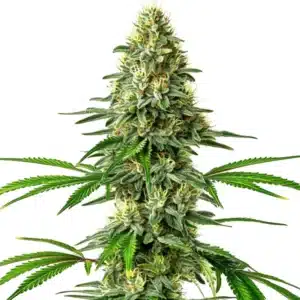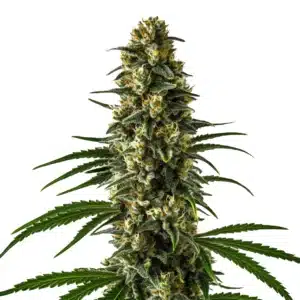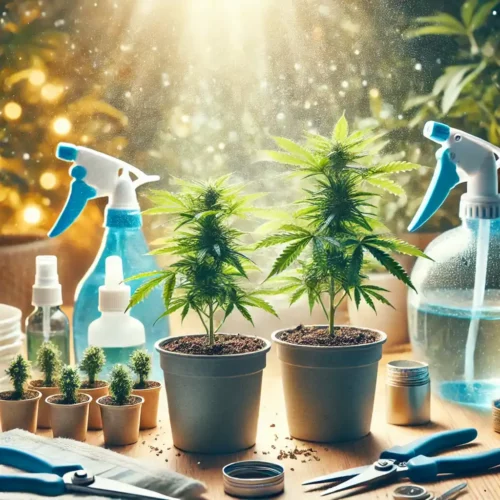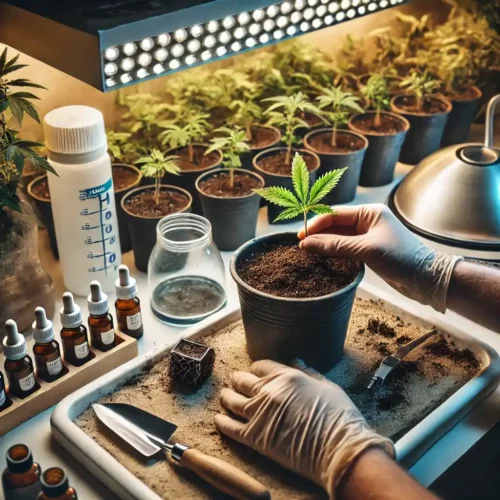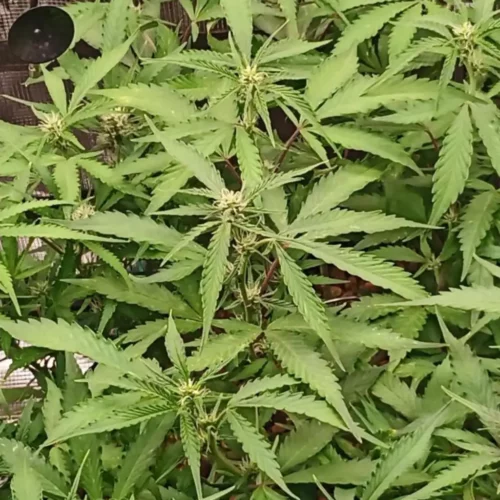Learning how to grow weed from a clone is one of the most effective ways to guarantee a successful cannabis cultivation journey. Whether you’re a beginner who’s just starting or an experienced grower wanting to improve, using clones eliminates many uncertainties that come with growing from seeds. You can enjoy the benefits of knowing exactly what to expect from your plants, including the strain, yield, and potency.
For those ready to get started or optimize their current grow, this guide will walk you through every step, from selecting the right clone to planting, growing, and finally harvesting your cannabis. Let’s dive into everything you need to know to master the art of growing weed from a clone, step by step.
What is a Cannabis Clone?
A cannabis clone is essentially a cutting from a mature cannabis plant that is placed in a growing medium to form roots. This means the clone is genetically identical to the mother plant. This is the key reason many growers choose clones over seeds, reliable genetics.
Cloning provides a fast start, bypassing the seedling stage, which saves time and ensures uniformity in the grow. You already know the plant’s growth characteristics, flavor profile, and yield potential. For anyone interested in how to grow weed from a clone, this method offers consistency and predictability, two things that make the cultivation process much easier and more rewarding.
Cloning vs. Growing from Seeds
When you grow from seeds, you are starting from scratch. There is a natural variation in seeds, even if they come from the same strain. This can lead to differences in potency, yield, and plant structure. Not to mention, the germination process can sometimes be unpredictable. You don’t always know which seeds will sprout, and there’s always the chance of ending up with male plants, which don’t produce buds and can ruin an entire crop if not identified early. For more consistent results, many growers turn to techniques like grow weed easy cloning to replicate their best plants reliably.
On the other hand, learning how to grow weed from a clone eliminates these variables. A clone ensures you are growing a female plant with the exact traits you want. The cutting comes from a plant that has already proven its worth, so you can replicate those results. If you’re a grower who doesn’t have time for trial and error, clones are the way to go.
Why Choose Clones for Cannabis Cultivation?
Choosing clones isn’t just about speed, it’s about reliability. When you grow weed from a clone, you can rest assured that the plant will have the same characteristics as its parent, making it easier to manage and predict outcomes. You already know how much light, nutrients, and care it needs because its genetics are no mystery.
Clones are also particularly helpful for those growing for specific purposes, like medicinal use. For example, if you find a strain with the perfect balance of CBD and THC for your needs, cloning allows you to recreate that exact ratio every time. Seeds won’t guarantee the same results, which can be a source of frustration for many growers.
Promos & Deals
Selecting the Right Clone for How to Grow Weed from a Clone
The success of your grow largely depends on selecting the right clone. If you want to know how to grow weed from a clone and do it well, starting with a healthy, robust clone is non-negotiable. The better the quality of your starting material, the higher your chances of a productive grow.
Identifying Healthy Clones
When shopping for clones, you need to know how to spot a healthy one. A good clone will have vibrant green leaves and strong, thick stems. Avoid clones with yellowing leaves, as this can be a sign of nutrient deficiencies or poor health. You should also check for signs of pests or diseases, such as spots on the leaves or drooping.
Another thing to consider is the root system. If possible, ask to see the roots of the clone. Healthy roots should be white or light-colored and have no foul smell. Dark or mushy roots are signs of root rot, which can be fatal for the plant. Learning how to grow weed from a clone starts with picking a winner, so take your time during this stage.
Best Strains for Cloning
Not all strains are created equal when it comes to cloning. Some strains take well to being cloned and will flourish, while others can be more challenging. If you’re new to the process and want to understand how to grow weed from a clone successfully and with minimal stress, start with strains known for being clone-friendly.
Strains like Gelato 33, Gruntz, and Platinum OG are excellent choices for beginners because they are resilient and easy to work with. They have strong root systems and respond well to various growing environments. For more experienced growers, strains like Illemonati or Jelly Cake offer unique flavor profiles and high yields, making them worth the extra effort.
Where to Buy Cannabis Clones
Finding a reliable source for clones is crucial. Not all dispensaries or growers are equally meticulous in how they care for their plants. Look for licensed dispensaries or growers who specialize in clones. This ensures that you’re getting healthy, disease-free plants.
Many growers also offer clones online, but be cautious when purchasing from less-established sources. Read reviews and ensure that the seller has a solid reputation. Keep in mind that learning how to grow weed from a clone starts long before you plant the clone, it begins with the quality of the plant itself.
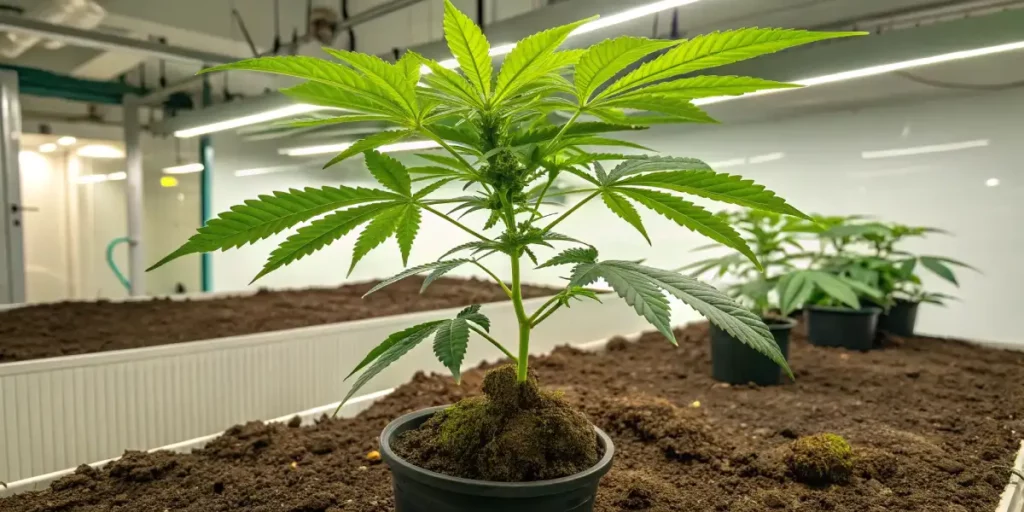
Preparing Your Grow Space: How to Grow Weed from a Clone
Now that you’ve chosen a healthy clone, the next step is preparing your grow space. Whether you’re growing indoors or outdoors, creating the right environment is critical to the success of your clone. This is where many growers make or break their grow.
Indoor vs. Outdoor Cloning Environments
One of the biggest decisions you’ll make when learning how to grow weed from a clone is whether to grow indoors or outdoors. Both have their pros and cons. Indoor growing gives you more control over the environment, light, humidity, and temperature can all be managed, which can result in better yields and healthier plants.
Outdoor growing, on the other hand, is often cheaper since you’re using natural sunlight. However, outdoor growing comes with more risks, such as pests, fluctuating temperatures, and unpredictable weather. In Maine, for example, the climate may require growers to start indoors and move the plants outdoors once they are stronger and the risk of frost has passed.
Lighting Requirements for Clones
Clones need light, but too much light can overwhelm them, especially during the early stages. When growing weed from a clone, you’ll need to strike the right balance. Indoor growers should use low-intensity lights, such as T5 fluorescent lights, which are gentle on young plants and help stimulate root growth.
As the plants grow and establish themselves, you can gradually introduce more intense light, like LED or HPS lights, which are more effective for larger, mature plants. Outdoors, natural sunlight will do the job, but make sure your plants are getting enough light without being exposed to extreme heat.
Humidity and Temperature Control
Maintaining the right humidity and temperature is essential for clone health. For the first few days after planting your clone, aim for a humidity level of around 70-80%. This high humidity helps the plant focus on developing strong roots.
As the roots develop, you can gradually lower the humidity to around 50-60%. This adjustment mimics the natural conditions that encourage root growth. Temperature control is equally important. Keep the temperature between 72-77°F (22-25°C) for optimal growth. Clones are sensitive to temperature extremes, so avoid exposing them to cold drafts or high heat.
For indoor grows, consider investing in a humidifier or dehumidifier to maintain the ideal environment. A small fan for air circulation also helps keep the temperature stable and prevents mold or mildew from forming. If you’re growing outdoors, keep an eye on weather changes, especially in the cooler months. If nighttime temperatures drop too low, it can stunt the growth of your clone, delaying your harvest.
How to Plant a Cannabis Clone
Once you’ve prepared your grow space, the next step in learning how to grow weed from a clone is planting. This is a delicate stage where your attention to detail will determine the clone’s ability to thrive. The planting process can seem daunting, but with the right technique, your clone will be well on its way to becoming a strong, productive plant.
Preparing the Rooting Medium: How to Grow Weed from a Clone
Before you plant your clone, make sure you’ve selected the right rooting medium. Cannabis clones thrive in mediums that retain moisture without becoming waterlogged. Popular choices include coco coir, rock wool, or a light, aerated soil mix. These mediums help the clone establish roots quickly by providing moisture while allowing for good oxygen flow.
Hydrate the medium thoroughly before planting. If you’re using soil, make sure it’s loose and airy. Avoid compacting the soil, as this can suffocate the young roots. Preparing the rooting medium is an important step in how to grow weed from a clone, as the right medium sets the foundation for strong root development. The better the roots, the healthier your plant will be in the long run.
Proper Potting Techniques
Now that your medium is ready, it’s time to pot your clone. Start by digging a small hole in the center of the pot. The hole should be deep enough to comfortably accommodate the roots of the clone without crowding them. Gently place the clone in the hole, ensuring that the roots are spread out and not tangled. Cover the roots with the medium, lightly pressing around the base of the plant to keep it secure.
Be careful not to pack the medium too tightly, as the roots need space to grow and breathe. After planting, water the clone lightly to help it settle into its new home. Use water at room temperature and avoid overwatering, too much moisture can drown the roots, leading to stunted growth. Mastering this step is essential for anyone learning how to grow weed from a clone, as proper potting ensures the plant’s early success.
Watering and Nutrient Needs for Young Clones
Clones are sensitive to overwatering, especially in the early stages. When learning how to grow weed from a clone, knowing the balance between hydration and dryness is key. Water your clone lightly, ensuring the medium stays moist but not soggy. Over time, as the roots establish themselves, you can begin to water more deeply.
In terms of nutrients, less is more in the beginning. Clones don’t need heavy nutrient feeding right away. Start with a mild nutrient solution designed for seedlings or clones. These solutions provide just enough nourishment to support early growth without overwhelming the young plant. As your clone grows and enters the vegetative stage, you can gradually introduce more nutrients to support robust growth.
Taking Care of Your Clone
Once your clone is planted, the real work begins. Successfully growing weed from a clone requires regular monitoring and care. At this stage, your main focus will be on helping your clone establish strong roots and healthy growth patterns. Proper care during these early days sets the foundation for a healthy, high-yielding plant.
Monitoring Growth and Root Development
Keep a close eye on your clone’s progress, especially in the first few weeks. Your goal is to ensure the plant develops strong roots that can support its future growth. One of the easiest ways to check root development is by gently lifting the pot or grow medium to see if roots are poking out from the bottom. Strong, white roots are a sign of good health, while dark or mushy roots indicate problems like root rot.
During this time, it’s important to watch for signs of stress, such as drooping leaves, yellowing, or slow growth. If you notice these issues, it may be a sign that the plant isn’t receiving the right balance of light, water, or nutrients. Correcting these problems early on will ensure your clone has the best chance to thrive.
Training Techniques for Clones
Training techniques are an essential part of optimizing your plant’s growth. When learning how to grow weed from a clone, one of the most useful skills is training your plants to increase yields and ensure even light exposure. Low-stress training (LST) is a popular method for clones. This involves gently bending and tying down the branches to create a more even canopy. This allows light to penetrate deeper into the plant, encouraging more bud sites and larger yields.
Another effective technique is topping, where you trim the top of the plant to encourage it to grow bushier, rather than taller. This can be particularly helpful for indoor growers with limited space. Training your clones early on sets them up for higher yields and better-quality buds during the flowering stage.
Problems and How to Fix Them
Despite your best efforts, you may encounter some challenges along the way. Nutrient deficiencies, overwatering, or pest infestations can affect the health of your clone. If you notice yellowing leaves, check for signs of nutrient imbalances. Adjusting the pH of your water or adding the appropriate nutrients can help solve this issue.
Pests like spider mites or aphids can be a threat to cannabis plants. Inspect your plants regularly for signs of pests, such as tiny bite marks on the leaves or webbing. Natural pest control methods, like neem oil, can help keep these invaders at bay without harming your plant. Stay proactive, and most issues can be resolved before they affect your clone’s overall health.
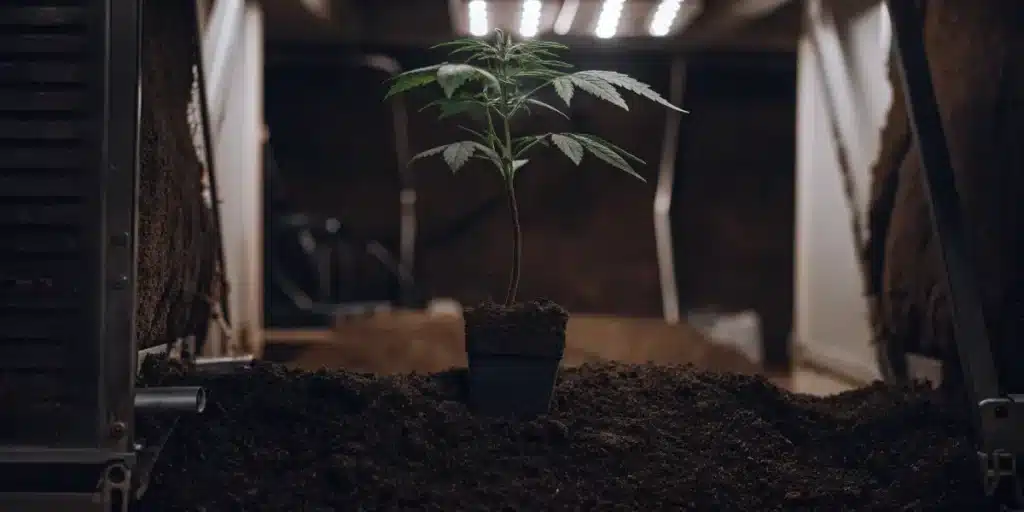
Transitioning to the Vegetative and Flowering Stages
As your clone grows stronger, it will eventually enter the vegetative stage. This is where your plant focuses on growing taller, producing more leaves, and preparing for the flowering stage. Knowing when and how to make this transition is a vital part of learning how to grow weed from a clone.
Moving Clones from Vegetative to Flowering
To transition your clone from the vegetative to the flowering stage, you’ll need to adjust the light cycle if you’re growing indoors. Typically, plants in the vegetative stage require 18 hours of light and 6 hours of darkness. When you’re ready to induce flowering, change the light cycle to 12 hours of light and 12 hours of complete darkness. This change mimics the natural seasonal shift and signals the plant to start flowering.
Outdoor growers will rely on the natural sunlight cycle to trigger the flowering stage. As the days get shorter, your plants will naturally enter the flowering phase. Make sure your plants are getting enough light during this transition but avoid excessive exposure to harsh weather conditions, which can stress the plant and reduce yields.
Nutritional Changes in Flowering Stage
During the flowering stage, your plant’s nutritional needs will shift. In the vegetative stage, cannabis plants require higher levels of nitrogen to support leafy growth. But as your clone moves into flowering, it will need more phosphorus and potassium to support bud development. Switch to a nutrient solution specifically designed for the flowering stage, which will help promote healthy bud growth and maximize yield.
Be careful not to overfeed your plants during this time. Overfeeding can lead to nutrient burn, which can damage your plant and reduce the quality of your buds. Stick to a consistent feeding schedule, and monitor your plant for any signs of nutrient deficiencies or excesses.
Harvesting Your Cannabis Clone
After several weeks in the flowering stage, your plant will be ready for harvest. The exact timing of the harvest depends on the strain, but most plants are ready when the trichomes (the resinous glands on the buds) turn cloudy or amber in color. The pistils (hairs on the buds) will also start to curl and darken. These are good indicators that your plant is at its peak potency.
When harvesting, be sure to cut the buds carefully and trim away excess leaves. Dry the buds in a cool, dark place with good airflow to preserve their flavor and potency. After drying, curing your buds in airtight jars for a few weeks will improve their aroma and effects. Proper harvesting and curing are the final steps in mastering how to grow weed from a clone, ensuring you get the most out of your hard work.
FAQS About How to Grow Weed from a Clone
What is a cannabis clone and how is it different from growing from seeds?
A cannabis clone is a cutting taken from a mature cannabis plant, which is then placed in a growing medium to form roots. It is genetically identical to the mother plant, ensuring uniformity in traits such as yield, potency, and flavor. In contrast, seeds can produce varied results, and you may face uncertainties like male plants or differences in potency.
Why should I choose to grow weed from a clone instead of seeds?
Growing weed from a clone offers consistency and predictability. Unlike seeds, which can vary in potency and yield, clones guarantee that you will get the same traits as the mother plant, making them ideal for growers who want reliable results. Additionally, clones skip the seedling stage, saving time and ensuring faster growth.
How do I select a healthy cannabis clone for growing?
When selecting a cannabis clone, look for one with vibrant green leaves, thick stems, and healthy, white roots. Avoid clones with yellowing leaves or signs of pests and diseases. A healthy clone is crucial to ensure successful growth, so take time to choose one that shows no signs of root rot or poor health.
What is the best environment for growing cannabis clones, indoors or outdoors?
Both indoor and outdoor environments have their advantages. Indoor growing offers more control over light, humidity, and temperature, leading to better yields and healthier plants. Outdoor growing utilizes natural sunlight, but it carries risks like pests and unpredictable weather. Choose the environment that best suits your resources and climate.
How do I care for my cannabis clone after planting it?
After planting your cannabis clone, ensure it is kept in the right environment with proper light, humidity, and temperature. Water it lightly and avoid overwatering, as clones are sensitive to excess moisture. Monitor for signs of stress such as yellowing leaves or slow growth, and adjust water, light, and nutrients accordingly to help the clone establish strong roots and healthy growth.

